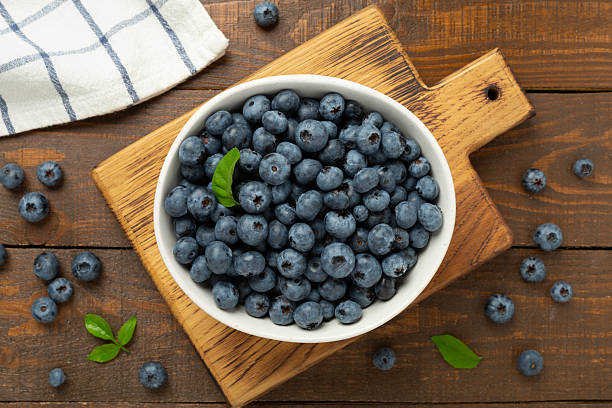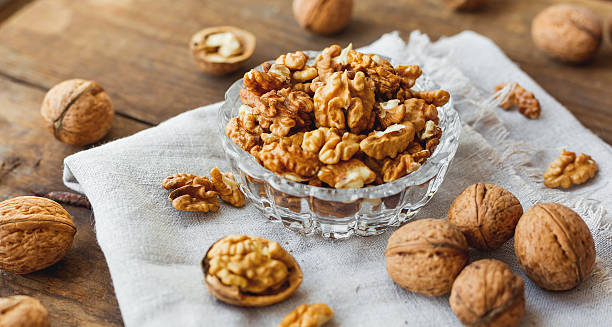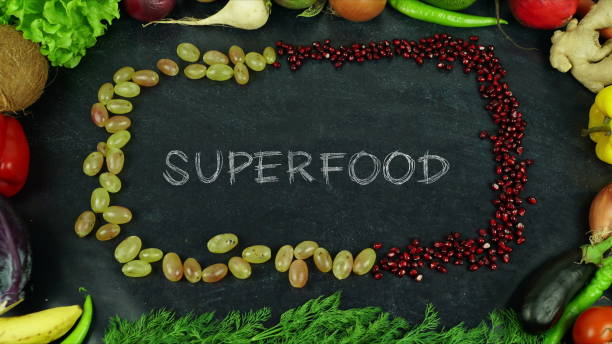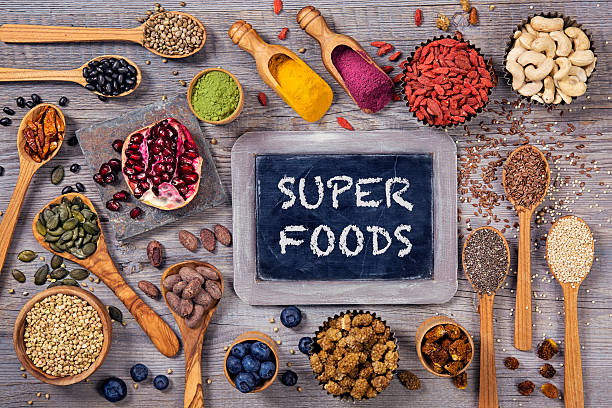Managing blood sugar is one of the most important steps for staying healthy, especially if you are living with diabetes or prediabetes. High or unstable blood sugar can affect your energy, mood, and even long-term health. The good news? What you put on your plate makes a big difference. Food isn’t just fuel—it’s medicine. While medication and exercise play key roles, the foods you eat every day are the foundation that can either help or harm your blood sugar balance.
Superfoods are nutrient-packed foods that deliver more health benefits than most everyday ingredients. They are rich in vitamins, minerals, antioxidants, and fiber that work together to support better health. Many of them not only help control blood sugar but also improve energy, reduce inflammation, and protect the heart—three areas that matter most for people managing diabetes. By adding more of these powerful foods to your diet, you give your body a natural way to stay balanced and strong.
In this article, we’ll explore 7 superfoods that research shows can help manage blood sugar levels, why they work, and simple, delicious ways to include them in your daily meals.
Why Blood Sugar Control Matters
When you eat, your body breaks down carbs into glucose, which enters your bloodstream. Insulin, a hormone made by the pancreas, helps move this sugar into your cells for energy.
But when blood sugar stays high for too long, it can damage your blood vessels, nerves, eyes, and kidneys. That’s why managing blood sugar is crucial for preventing complications of diabetes and supporting long-term health.
Healthy eating habits, combined with smart food choices, can keep your levels more stable throughout the day. And that’s where superfoods come in.

1. Blueberries: The Antioxidant Powerhouse
Blueberries are small but mighty. These little berries are often called a “superfruit” because of their high levels of antioxidants, vitamins, and fiber. One of their key compounds, anthocyanins, gives blueberries their deep blue color and also plays a powerful role in health. Research suggests that anthocyanins may help improve insulin sensitivity, support better blood flow, and lower blood sugar spikes after meals.
In addition to helping with blood sugar, blueberries are also rich in vitamin C, vitamin K, and fiber, which can support digestion and heart health. The fiber helps slow the absorption of sugar into the bloodstream, keeping energy levels steady instead of causing a quick spike and crash.
A study published in the Journal of Nutrition found that people who ate blueberries regularly had better insulin response compared to those who didn’t. This means that adding blueberries to your diet may not only satisfy your sweet tooth but also provide long-term benefits for blood sugar control and overall health.
How to enjoy blueberries:
- Add a handful to oatmeal or Greek yogurt.
- Blend into a smoothie for a quick breakfast.
- Snack on them fresh or frozen.
2. Chia Seeds: Tiny Seeds With Big Benefits
Chia seeds are loaded with fiber, omega-3 fatty acids, and protein, making them one of the most versatile superfoods for better health. The high fiber content forms a gel-like texture when mixed with liquid, which slows down digestion and helps prevent sharp rises in blood sugar. This steady release of glucose means you avoid sudden spikes and crashes in energy. Just two tablespoons of chia seeds contain almost 10 grams of fiber, which is a big boost toward your daily needs and supports healthy digestion.
These tiny seeds are also rich in plant-based protein and healthy fats, both of which keep you feeling full longer. This can be especially helpful for managing weight, another key factor in controlling blood sugar. Plus, omega-3 fatty acids found in chia seeds help reduce inflammation, which is often linked to insulin resistance and heart disease.
According to the European Journal of Clinical Nutrition, chia seeds can help lower blood sugar after meals and improve heart health. By including them in your diet, you’re not only supporting blood sugar balance but also protecting your heart and overall well-being.
Ways to add chia seeds:
- Stir into smoothies or shakes.
- Mix into overnight oats or yogurt.
- Create chia pudding with almond milk and fruit.
3. Spinach: A Leafy Green Superstar
Spinach is rich in magnesium, a mineral that plays a key role in insulin sensitivity. Magnesium helps your body use insulin more effectively, which keeps blood sugar levels steady. People with low magnesium levels often have a higher risk of type 2 diabetes, making magnesium-rich foods like spinach an important part of a blood sugar–friendly diet.
But spinach offers more than just magnesium. It is also packed with vitamins A, C, and K, plus antioxidants like lutein and beta-carotene. These powerful nutrients protect your eyes and heart—two areas that are often affected by diabetes complications. Eating spinach regularly may help lower oxidative stress, reduce inflammation, and support healthier blood vessels.
Another advantage of spinach is that it’s very low in calories and carbohydrates, which makes it easy to enjoy in larger portions without spiking blood sugar. Adding spinach to your meals not only boosts nutrition but also helps you feel full and satisfied while keeping blood sugar in check.
Tasty ideas for spinach:
- Toss fresh spinach into salads.
- Blend into a green smoothie.
- Lightly sauté with garlic and olive oil.
4. Lentils: The Plant-Based Protein Boost
Lentils are one of the best superfoods for blood sugar management. These nutrient-dense legumes are high in protein, fiber, and resistant starch. Together, these nutrients work to slow the release of glucose into the blood, preventing sharp spikes after eating. Unlike refined carbs that break down quickly, lentils digest more slowly, giving you steady energy and helping you feel full longer.
Lentils also provide important vitamins and minerals like iron, folate, and magnesium, which support healthy blood and nerve function. Since they are plant-based, they are naturally low in fat and make a great option for people looking to improve heart health while managing diabetes.
Research in the Journal of Nutrition showed that replacing starchy foods like rice or potatoes with lentils can lower blood sugar by up to 20% after meals. This makes lentils a smart swap for common side dishes and an easy way to balance your plate. By adding lentils to your diet a few times a week, you can enjoy delicious meals while supporting better blood sugar control.
Simple ways to eat lentils:
- Add to soups and stews.
- Use as a base for veggie burgers.
- Toss into salads for extra protein.

5. Walnuts: Smart Fats for Stable Sugar
Walnuts are rich in healthy fats, fiber, and plant-based omega-3s, making them one of the top nuts for managing blood sugar. The combination of protein, fiber, and good fats helps slow digestion, which prevents sudden spikes in blood sugar after meals. Unlike sugary snacks, walnuts provide steady energy and keep you feeling satisfied longer.
Eating walnuts may also improve insulin sensitivity, meaning your body can use insulin more effectively to move glucose out of the blood. On top of that, walnuts are known to reduce inflammation, which is often higher in people with diabetes and linked to other health issues like heart disease.
A study in Diabetes, Obesity and Metabolism found that eating walnuts daily helped lower fasting blood sugar and improved cholesterol levels. This makes walnuts a heart-healthy and blood-sugar-friendly snack all in one. Adding a small handful of walnuts to your diet each day is a simple step that can support both better blood sugar control and overall wellness.
Easy walnut ideas:
- Eat a small handful as a snack.
- Sprinkle on salads or oatmeal.
- Blend into sauces or smoothies for creaminess.
6. Cinnamon: A Natural Spice for Blood Sugar
Cinnamon isn’t just a spice—it’s also one of the superfoods for blood sugar control. This warm, fragrant spice has been used for centuries in traditional medicine, and modern research now supports its benefits. Studies suggest that cinnamon may improve insulin sensitivity, allowing your cells to absorb and use glucose more effectively. This can help lower fasting blood sugar and reduce the risk of long-term complications.
Cinnamon is also rich in powerful plant compounds with antioxidant and anti-inflammatory effects. These properties may protect your blood vessels and support overall heart health, which is especially important for people managing diabetes.
According to the American Diabetes Association, cinnamon can help reduce blood glucose levels and improve cholesterol. This means that adding cinnamon to your meals not only supports blood sugar balance but also promotes healthier cholesterol levels—two key factors for managing diabetes naturally.
How to add cinnamon:
- Sprinkle on oatmeal, smoothies, or yogurt.
- Mix into coffee or tea.
- Use in baking or savory dishes like curry.
7. Oats: The Fiber-Friendly Breakfast
Oats are one of the best whole grains for stable blood sugar. Unlike refined grains, oats digest slowly, providing steady energy instead of sudden spikes. They are rich in beta-glucan, a type of soluble fiber that forms a thick gel in the stomach. This slows digestion and keeps blood sugar from rising too quickly after meals. The fiber in oats also helps improve gut health and keeps you feeling full longer, which can be helpful for weight management.
Oats are naturally packed with important nutrients like magnesium, iron, and B vitamins, all of which support energy and metabolism. Since they are low on the glycemic index, they make a smart choice for people with diabetes or anyone looking to maintain healthy blood sugar levels.
A review in the Nutrients journal showed that oats can improve insulin sensitivity and lower fasting glucose. This means that eating oats regularly may help your body respond better to insulin and maintain more stable blood sugar throughout the day. Adding oats to your breakfast is a simple yet powerful step toward better health.
Healthy ways to eat oats:
- Enjoy overnight oats with berries.
- Make warm oatmeal topped with nuts and cinnamon.
- Use oat flour in baking for a blood-sugar-friendly twist.

Tips for Adding Superfoods to Your Diet
Now that you know the top superfoods for blood sugar, the next step is learning how to make them a regular part of your meals. It’s not about following a strict or boring diet—it’s about making small, smart changes that fit into your lifestyle. When you add these foods into your daily routine, you give your body the tools it needs to stay balanced and energized.
- Start small: Instead of changing everything at once, begin by adding one or two superfoods a day. For example, sprinkle chia seeds into your smoothie or add spinach to your lunch. Over time, these small steps create lasting habits.
- Mix and match: Superfoods work even better when combined. Try oatmeal topped with blueberries, chia seeds, and cinnamon for a blood-sugar-friendly breakfast. Or enjoy a salad with spinach, walnuts, and lentils for a filling lunch that keeps your energy steady.
- Plan ahead: Healthy choices are easier when they’re convenient. Keep quick snacks like walnuts, blueberries, or overnight oats ready to grab when hunger strikes. Having these options on hand makes it less tempting to reach for processed foods.
- Stay consistent: The real benefits of superfoods come with regular use. Eating them once in a while won’t be enough. By making them part of your daily meals, you’ll notice better blood sugar control, improved energy, and overall stronger health.
Foods to Limit for Better Blood Sugar
While superfoods can help, it’s also important to cut back on foods that cause spikes in blood sugar. Eating too many refined or processed foods can undo the benefits of a healthy diet and make blood sugar harder to manage. These foods often digest quickly, causing sharp rises in glucose and leaving you feeling tired or hungry soon after.
Try to limit:
- Sugary drinks and sodas: These are one of the fastest ways to raise blood sugar. Even fruit juices can be high in sugar without the fiber to balance it.
- Refined carbs like white bread and pastries: These break down quickly into glucose and have little nutritional value compared to whole grains.
- Processed snacks high in sugar and unhealthy fats: Items like chips, cookies, and packaged desserts can raise blood sugar while also increasing inflammation.
Instead, replace them with whole, nutrient-rich choices like the superfoods above. Drinking water or unsweetened tea instead of soda, choosing oats instead of white bread, or snacking on walnuts instead of chips are simple swaps that make a big difference. Over time, these better choices support stable blood sugar and overall health.
Final Thoughts: Superfoods for a Healthier Future
Managing blood sugar doesn’t have to feel overwhelming. With the right food choices, you can take control of your health one step at a time. By adding these 7 superfoods—blueberries, chia seeds, spinach, lentils, walnuts, cinnamon, and oats—you give your body the natural support it needs to stay balanced, energized, and strong. Each of these foods works in a unique way to improve insulin sensitivity, slow down sugar absorption, and protect your heart and overall health.
Small changes really do add up. Even one better choice at each meal can move you closer to your health goals. Replacing refined carbs with fiber-rich oats, swapping processed snacks for walnuts, or enjoying a blueberry smoothie instead of a sugary drink can make a big difference over time. The key is consistency—building simple habits that become part of your everyday routine.
Remember, you don’t have to be perfect to see results. Every healthy swap is a step toward better blood sugar control, more energy, and a healthier future.
👉 Your turn: Which of these superfoods will you try first? Share your thoughts or favorite recipes in the comments below—we’d love to hear from you!

